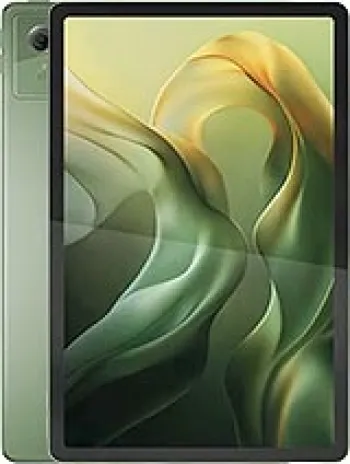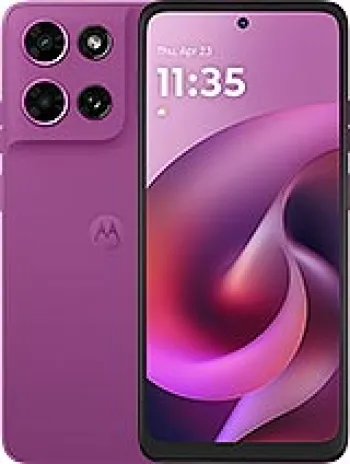
Introduction to Motorola SLVR L9
The Motorola SLVR L9, announced in February 2007, is a feature phone that embodies the sleek and stylish design that Motorola's SLVR series is known for. Although now discontinued, the SLVR L9 was regarded as a highly functional and attractive handset during its time on the market. It was released when the mobile industry was transitioning from basic function phones to more feature-rich devices, making it an interesting artifact of mobile technology history.
Design and Build
The SLVR L9 has a slender and lightweight build with dimensions of 113 x 49 x 11.5 mm and a weight of just 96 grams. Its compact size made it incredibly pocket-friendly, a crucial feature for many users who valued portability. The phone was equipped with a Mini-SIM slot and featured a slick keypad that facilitated easy texting and dialing.
Display
The phone sported a 1.9-inch TFT display capable of displaying 256K colors. While the screen's 176 x 220 pixels resolution might seem scanty by today’s standards, it was quite sufficient for the display size at the time. The crispness and vibrancy of the screen were appreciated for tasks such as viewing images and playing games.
Camera
The Motorola SLVR L9 came equipped with a 2 MP single rear camera. While it pales in comparison to current smartphone imaging capabilities, back in 2007, it provided acceptable image quality for casual snapshots. The camera could also record videos at CIF resolution, a standard format at the time.
Performance and Software
The phone operated as a basic feature phone, yet it included several functionalities that enhanced its performance and versatility. The Motorola SLVR L9 was capable of sending SMS, EMS, MMS, email, and instant messaging, giving it a robust communication suite for its time. Java MIDP 2.0 support allowed the installation of additional apps, extending its functionality for games and utilities.
Memory and Storage
Internally, the SLVR L9 boasted 20MB of storage. While this number is modest, users could expand the storage by utilizing the dedicated microSD card slot. This feature allowed for additional storage of photos, music, and other media, increasing the utility of the handset beyond its built-in capacity.
Network and Connectivity
The phone supported GSM network technology with 2G bands covering GSM 850, 900, 1800, and 1900, ensuring compatibility with networks around the globe. For internet access, the device was equipped with GPRS Class 10 and EDGE Class 10, which offered basic web connectivity suitable for WAP 2.0/xHTML browsing.
Audio and Multimedia
The Motorola SLVR L9 provided a satisfactory audio experience with its built-in loudspeaker and support for MP3 ringtones, a feature that was not universally available on all phones at the time. However, lacking a 3.5mm headphone jack, the phone relied on a miniUSB connection for audio accessories, which could be considered a limitation.
Battery Life
Powering the device was a removable Li-Ion 880 mAh battery that allowed the phone a standby time of up to 350 hours and talk time up to 4 hours. This battery performance was suitable for daily use, particularly given the energy-efficient operations of feature phones at the time.
Additional Features
The SLVR L9 also included a stereo FM radio with RDS for an additional entertainment option. Connectivity features such as Bluetooth 2.0 with A2DP enabled wireless streaming to headphones and other supported devices, though it lacked Wi-Fi and GPS capabilities.
Conclusion
Despite its discontinuation, the Motorola SLVR L9 remains a symbol of the transitional phase in mobile technology—from simple mobile phones to multifunctional smartphones. Its sleek design, combined with a reasonable set of features for its time, made it a worthy choice for users in 2007. The device serves as a nostalgic reminder of the brand's innovation and design acumen that helped shape the mobile landscape.
Key Features of Motorola SLVR L9
- Compact and Lightweight Design: Dimensions of 113 x 49 x 11.5 mm and a weight of 96 g.
- GSM Technology: Supports multiple GSM bands for better connectivity.
- Expandable Storage: microSD card slot available for memory expansion.
- Decent Camera: 2 MP main camera for basic photography needs.
- Bluetooth v2.0 with A2DP: Allows for wireless audio and data transfer.
- Radio: Stereo FM radio with RDS for music and news on the go.
- Long Battery Life: Removable Li-Ion 880 mAh battery with up to 350 hours of standby.
- Wide Messaging Options: Supports SMS, EMS, MMS, Email, and Instant Messaging.
- Removable Li-Ion 880 mAh battery with up to 350 hours standby and up to 4 hours talk time.
Disadvantages of Motorola SLVR L9
- Discontinued model, no longer officially supported by the manufacturer.
- Limited internal memory of only 20MB, requiring the use of a microSD card for additional storage.
- Low-resolution display with only 176 x 220 pixels (~148 ppi density).
- No front camera for selfies or video calls.
- No 3.5mm jack for standard headphone connection.
- No WLAN capability, limiting internet connectivity options.
- No GPS support for location services.
- MiniUSB 1.1 is used for connection, which is slower compared to modern USB standards.
- Limited battery talk time of up to 4 hours.
- Screen-to-body ratio is quite low, at only ~20.5%.









View Also
More Phones
All Rights Reserved +14266 Phones © Mobilawy 2025

























